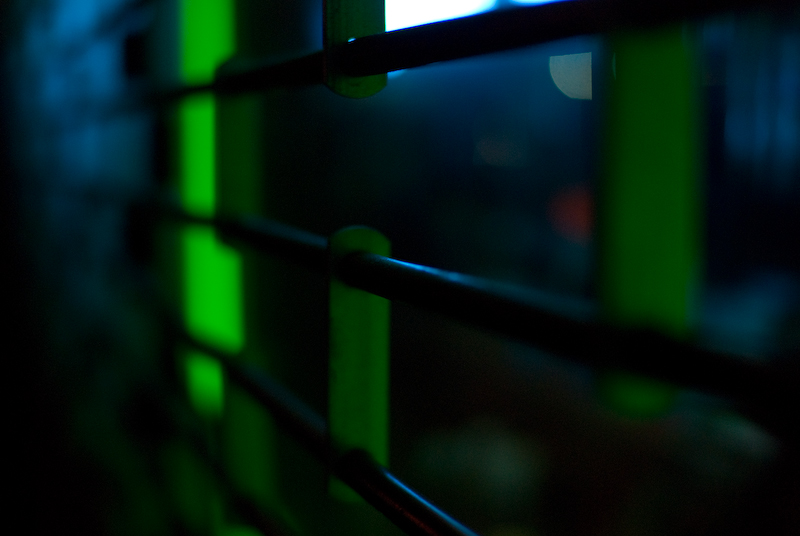|
|
LITR
5831 World / Multicultural Literature: |
|
Jessica Myers
06/15/2016
Concentration Camps: Another American Nightmare
In my
freshmen Pre-AP English class this year, I taught the poem, “In Response to
Executive Order 9066: All Americans of Japanese Descent Must Report to
Relocation Centers” by Dwight Okita. Okita takes on the voice of a young girl
who writes a letter to officials requesting her relocation. Her tone is hopeful
as she attempts to describe all the ways she has assimilated into American
culture and convince these officials that she is not “trying to start a war” or
“giving secrets / away to the Enemy” (18, 19). This poem sheds light on a
glossed-over moment in American history. While Americans were condemning Germans
for allowing the Holocaust to occur in their own backyard, Americans, on a much
lesser scale, were allowing the government to target a specific group of
immigrants and relocate them to camps for national security reasons. How could
Americans not have learned from the poor treatment of Native Americans and
African slaves? The U.S. government abused a just system of law and proceeded to
incarcerate thousands of Japanese Americans without resistance from the dominant
culture.
Japanese Americans were viewed as a threat to national security because of their
potential ties to their homeland, Japan. Therefore, President Roosevelt signed
Executive Order 9066, which began “the evacuation and mass incarceration of
120,000 persons of Japanese ancestry living on the West Coast, most of whom were
U.S. citizens or legal permanent resident aliens” (“Internment History”). The
official reason for forcing so many Japanese Americans to relocate
was for their own “safety” (Jardins). However, “[t]here was widespread agreement
that the Issei [first-generation Japanese immigrants] and Nisei
[second-generation Japanese Americans] needed to be removed from the coast where
collusion with the Japanese was easy and, it was believed, likely” (Jardins).
Moreover, “the
causes for this unprecedented action in American history ‘were motivated
largely by racial prejudice, wartime hysteria, and a failure of political
leadership’” (“Internment History”).
Preexisting racial tensions and widespread fear due to the attack on Pearl
Harbor created pressure on the government to take action to protect the citizens
of the United States. Coming out of the Great Depression, laborers were
competing for jobs to feed their families. These
same “[w]orkers and businessmen who long competed with the Japanese for wages
and profits were eager supporters of the removal policy. Anti-Japanese sentiment
quickly became widespread among those who did not stand to profit immediately
from the confiscation of property and the removal of business and labor
competition” (Jardins). Americans were happy to allow a smaller group to suffer
so that they could feel safer and more secure. Therefore, similar to the Jews in
Germany, Japanese Americans “were given a week to tie up loose ends, close
businesses, and pull children out of schools before congregating at assigned
assembly centers” (Jardins). They could only bring what “they could carry
themselves, and these belongings would have to sustain many of them for the
better part of four years since internment didn’t officially end until 1946”
(Jardins). Japanese Americans were betrayed by their fellow countrymen in the
name of “security,” and they were treated as criminals by being shipped to camps
where they lived in horrible conditions.
The relocation centers are better termed as American concentration camps. Here,
Japanese Americans were imprisoned for up to four years “without due process of
law or any factual basis” (“Internment History”). These “cramped barracks” were
located in “isolated interior areas of Arizona, Utah, California, Wyoming,
Arkansas, Idaho, and Colorado” (Jardins). They were “surrounded by barbed wire
and armed guards” (“Internment History”). The living conditions in these camps
were not ideal. In these camps, “[i]nmates
lived in
blocks of barracks with communal bathrooms, laundry facilities, and
dining halls. Many cited extreme weather, dust storms, the lack of privacy, and
inadequate food as among the many travails of living behind barbed wire
(“American Concentration Camps”). Personal privacy along with the protection of
dignity were stripped from them. Ironically, the burden of keeping the camps
running was placed on the inmates. Their various responsibilities included
“preparing and serving food in the mess halls to felling trees for firewood, all
for a paltry $12 to $19 a month" (“American Concentration Camps”). The camps
also affected nuclear and extended family units. Sometimes “family
members were separated and put into different camps” (“Internment History”).
Furthermore, “[r]elocation
wreaked havoc on traditional family and gender roles. Japanese men felt
emasculated by the low wages they received for menial tasks in the camps, and
women felt shamed in barrack commodes that left them exposed when they dressed
and relieved themselves” (Jardins). In response to these emotions, “fathers
started eating with other men, while mothers fed their infants alone” (Jardins).
The family units could not survive the stress of living in captivity, and they
eventually splintered. Family units were not the only thing to perish in the
camps. While in these camps,
some Japanese Americans even died “due to inadequate medical care and the
emotional stresses they encountered. Several were killed by military guards
posted for allegedly resisting orders” (“Internment History”). After four years
of living in these conditions, in December 1944 the U.S. Supreme Court ruled “that
it was beyond the power of the War Relocation Authority ‘to detain citizens
against whom no charges of disloyalty or subversiveness have been made for a
period longer than that necessary to separate the loyal from the disloyal’”
(“Executive Order 9066”). The American Nightmare had finally ended. Japanese
Americans were free to return to their homes and pick up the pieces of their
broken lives.
The
trampling of basic American rights and targeting of a specific immigrant group
in the name of national security is unconscionable and should be guarded
against. Americans allowed themselves to be blinded by their prejudices and
fear. Rather than upholding the ideals of the American Dream, they allowed the
government to create another American Nightmare. People who had come to America
to seek solace from oppression and corrupt government were betrayed by their
fellow citizens. In my second research post, I plan to discover how Japanese
Americans picked up the pieces of their lives and were compensated for their
losses. How did they recover their broken culture and family ties?
Works
Cited
“American Concentration Camps.” Densho.
Densho: The Japanese American Legacy Project, 2016. Web. 15 June 2016.
"Executive Order 9066". Encyclopædia
Britannica. Encyclopædia Britannica Online. Encyclopædia Britannica
Inc., 2016. Web. 14 Jun. 2016.
“Internment History.” The Children of the
Camps Project. Satsuki Ina, 1999. Web. 15 June 2016.
Jardins, Julie Des. “From Citizen to Enemy: The Tragedy of Japanese Internment.”
History Now: The Journal of the Gilder
Lehrman Institute. The Gilder Lehrman Institute of American History, 2016.
Web. 15 June 2016.



